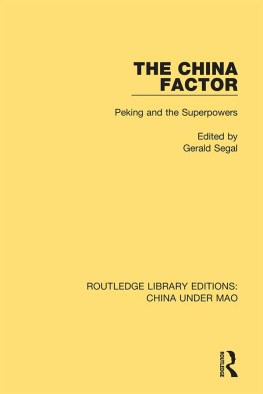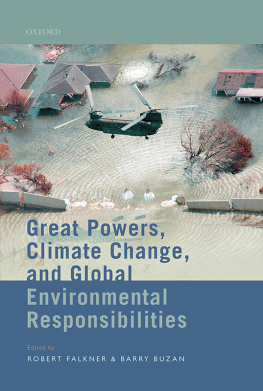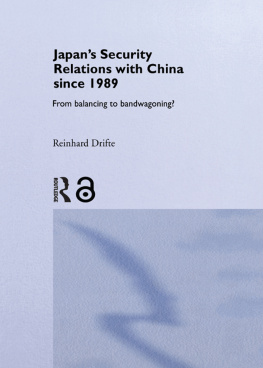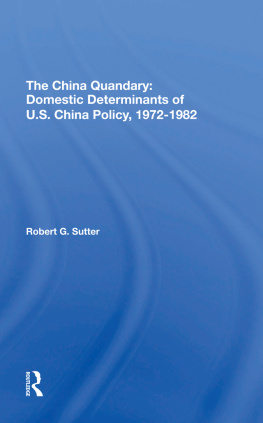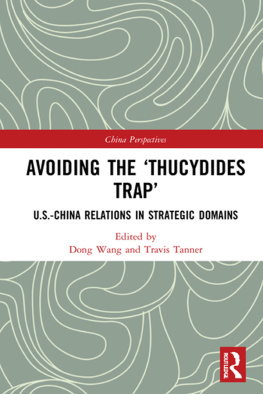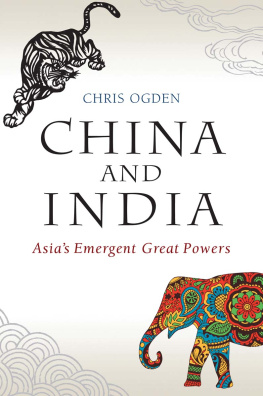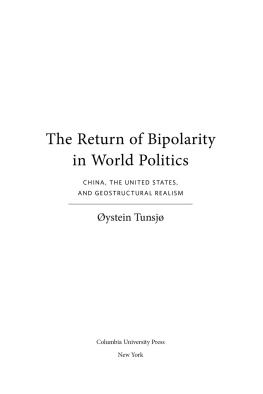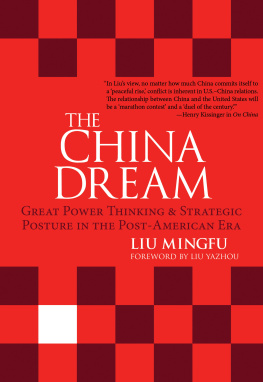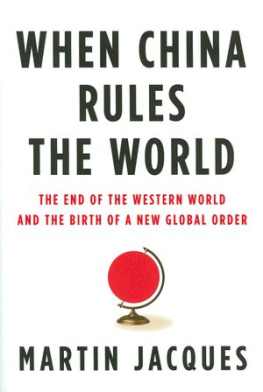Table of Contents
Guide
Print Page Numbers
ROUTLEDGE LIBRARY EDITIONS: CHINA UNDER MAO
Volume 2
THE CHINA FACTOR
THE CHINA FACTOR
Peking and the Superpowers
Edited by
GERALD SEGAL
First published in 1982 by Croom Helm Ltd
This edition first published in 2019
by Routledge
2 Park Square, Milton Park, Abingdon, Oxon OX14 4RN
and by Routledge
711 Third Avenue, New York, NY 10017
Routledge is an imprint of the Taylor & Francis Group, an informa business
1982 Gerald Segal
All rights reserved. No part of this book may be reprinted or reproduced or utilised in any form or by any electronic, mechanical, or other means, now known or hereafter invented, including photocopying and recording, or in any information storage or retrieval system, without permission in writing from the publishers.
Trademark notice: Product or corporate names may be trademarks or registered trademarks, and are used only for identification and explanation without intent to infringe.
British Library Cataloguing in Publication Data
A catalogue record for this book is available from the British Library
ISBN: 978-1-138-32344-5 (Set)
ISBN: 978-0-429-43659-8 (Set) (ebk)
ISBN: 978-1-138-34162-3 (Volume 2) (hbk)
ISBN: 978-0-429-44005-2 (Volume 2) (ebk)
Publishers Note
The publisher has gone to great lengths to ensure the quality of this reprint but points out that some imperfections in the original copies may be apparent.
Disclaimer
The publisher has made every effort to trace copyright holders and would welcome correspondence from those they have been unable to trace.
The China Factor
Peking and the Superpowers
Edited by Gerald Segal

1982 Gerald Segal
Croom Helm Ltd, 210 St Johns Road, London SW11
British Library Cataloguing in Publication Data
The China factor.
1. United States Foreign relations China
2. United States Foreign relations Soviet
Union
I. Segal, Gerald
327.73051 DK740.5.R9
ISBN 0-7099-2308-2
Printed and bound in Great Britain by
Biddles Ltd, Guildford and Kings Lynn
CONTENTS
1. An Introduction to the Great Power Triangle
Gerald Segal
2. China and the Great Power Triangle
Michael Yahuda
3. The Soviet Union and the Great Power Triangle
Gerald Segal
4. The United States and the Great Power Triangle
Banning Garrett
5. The Triangle in Western Europe
Lawrence Freedman
6. The Triangle in Eastern Europe
Edwina Moreton
7. An Assessment of the Great Power Triangle
Gerald Segal
To my colleague and friend
How important is China in international relations? There is much talk of Washington playing the China card or indeed China playing the American card against Moscow. There are also those who discuss the great power triangle and some who even talk of China as NATOs sixteenth member. There is an increasingly widespread belief that apart from the superpowers, China is the most important power in contemporary international politics. While there is undoubtedly some truth in those assessments, the reality is, as usual, far more complex than is suggested by such international games as card playing or by temporary talk of alliances of convenience.
The purpose of this book is to analyse certain crucial aspects of the contemporary great power triangle in order to begin developing a more complete picture of the role of China in the superpower balance. In order to pre-empt possible lines of criticism, it should be stated at the outset that this is not a book about general Chinese foreign policy, nor is it about all issues where China affects the policies of the superpowers. Chinas role in the Middle East or Africa has already been extensively analysed both in respect of general Chinese policy as well as its effect on Soviet-American relations. If this study had attempted to take in, for example, the disparate events in various Third World conflicts, the material would have become unmanageable. In any case, it is assumed that important as these developing states are, they are not part of the superpowers, or even Chinas, most basic strategic interests. The emphasis in this work is placed squarely on a limited, but crucial, aspect of international relations: the way in which the China factor affects the main strategic concerns of the superpowers.
This study also does not suggest that the great power triangle on strategic issues is either the most important topic in international politics, or is the only way of conceiving of the international system. There are various issues, for example concerning international energy requirements, where the great power triangle is not a useful way of conceiving of global politics. Before outlining more positively what this study is about, a few additional clarifications should be made.
There are several basic problems in analysing the great power triangle, not the least of which is that the geometric designation implies greater exactitude than exists in reality. This is a basic problem in almost any definition, let alone model, in international relations, as the reality is far more complex than is suggested by the simple definition. This study acknowledges that the relations among the three great powers that we have, for convenience sake, called a triangle, is far from uniform. Not only does it change over time, but it is also different depending on the place of events. It is these differences that will form a large part of the analysis in the text. We use the term great power triangle primarily as an organizing concept. No more precision can be expected when describing an international reality full of ever-changing variables.

